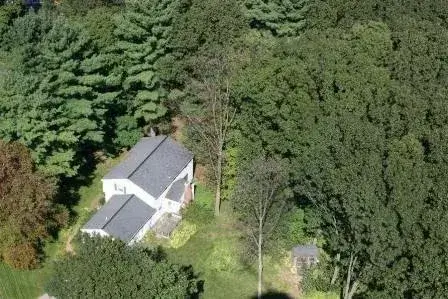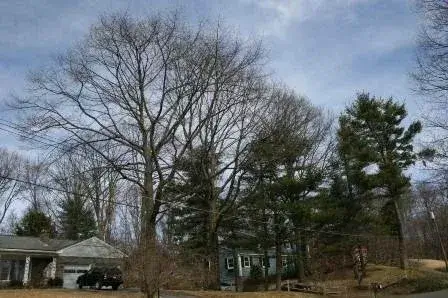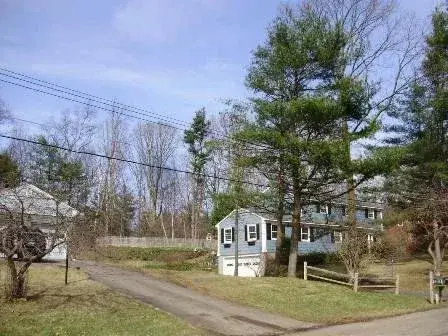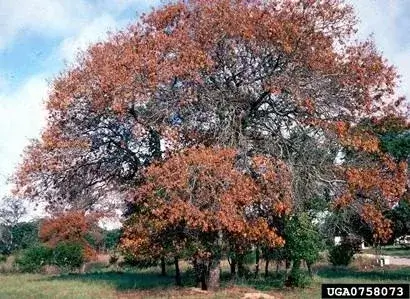
Oak wilt (Ceratocystis fagacearum) is a systemic, lethal disease caused by a fungus. The fungus grows in the xylem (sapwood) of the infected oak eventually resulting in the vessels clogging with gums and tyloses and death of vascular cells which then prevents the uptake and movement of water.
In areas where oak wilt is established, the disease causes up to an 11% loss of annual growth in oak. (1)
Currently, there are few known infestations of Oak Wilt in New York State. These locations include Islip, Riverhead and Southhold in Suffolk County; Brooklyn in Kings County and Canandaigua in Ontario County. Oakwilt is also found in Glenville, Schenectady County. A small infestation was discovered and treated in 2008 but was found again in 2013. See below for more details on that outbreak. If you think your oak tree is infected with Oak Wilt, please contact your local Cornell Cooperative Extension or NYS Department of Environmental Conservation Lands and Forests office immediately. [Information updated as of 2018]

Ceratocystis fagacearum, the oak wilt fungus, is spread to an oak tree via root grafts or beetles feeding on sap (nitidulids) at open wounds or on the leaves of healthy trees (oak bark beetles). Once inside the tree, the oak wilt fungus begins to replicate within the xylem of the tree.
Symptoms first appear near the top of the canopy. The outside of the leaves turn bronze, brown, or dull green, usually starting at the top of the leaf, while the base of the leaf remains green. Some leaves curl, droop and wilt. Leaves begin to drop soon after symptoms first develop.
In some species of oak, brown streaks develop in the outer sapwood of infected branches when leaf symptoms appear. This can be seen when an infected branch is cut diagonally. Eventually the tree loses all its leaves to the wilt.
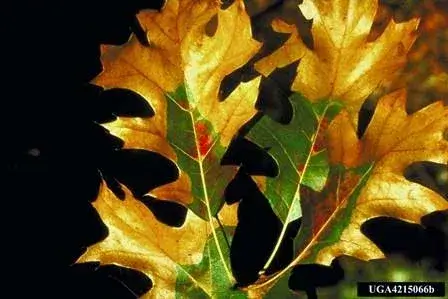
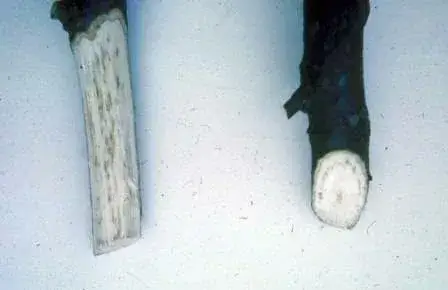
The year following the defoliation, fungus or spore mats may form on the trunk under the bark and on the opposing wood. Oval mats are gray or tan and turn black with age. The mats develop pressure pads that push out and crack the bark, exposing the fungus mat. The mat has a fruity odor which attracts then contaminates sap feeding beetles. Those contaminated beetles then carry the fungus to open wounds on other oak trees. Mats are primarily formed on red oaks.
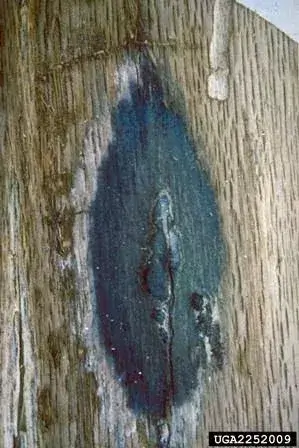

Oak wilt is primarily spread by beetles which feed on the fungus mats under the bark then carry spores to open wounds on nearby oak trees as well as through underground root grafts between oak trees. Infected trees form infection centers and mortality of oak occurs in rings from the initial infestation as the fungus moves through naturally occurring root grafts.
Root grafted oak trees usually die 1-6 years after the first oak is infected, and disease centers can move up to 50 feet per year.
Oak wilt can also be spread long distances through the movement of infested firewood.
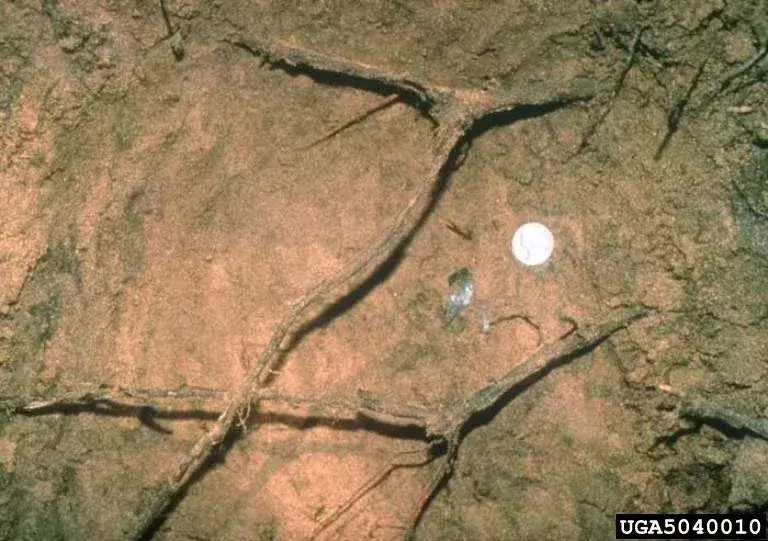
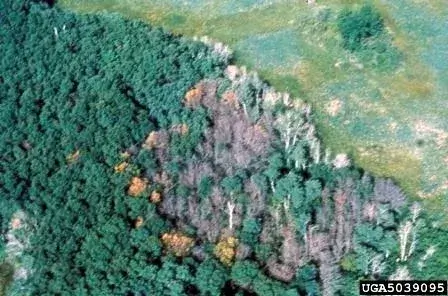

If an oak tree in a known oak wilt infested area needs to be pruned, do not prune in the spring or summer, especially April, May and June when the fungal mats and the sap beetles are present. If it is necessary to prune, the use of wound paint will prevent contaminated beetles from spreading the fungus to the open wound. (Note: This is one of the few times wound dressing is recommended; normally the pruning wound should be allowed to heal exposed to the air.) Clean pruning equipment between cuts and trees. Do not use climbing irons/spikes on living oak trees.
Vibratory plows or backhoes can be used to break root grafts by creating a trench around individual or groups of trees. This severs roots which prevents the spread through the grafts.
Individual oak trees can also be treated with systemic fungicides. (Only if disease becomes more prevalant in NY. Until then, the tree should be removed.)
If you think you have an infected tree contact your local Cornell Cooperative Extension or DEC Lands and Forest office immediately. Trees found to be infected in New York should be cut, chipped, and burned.
Don’t Move Firewood. Oak wilt can be spread through firewood movement.

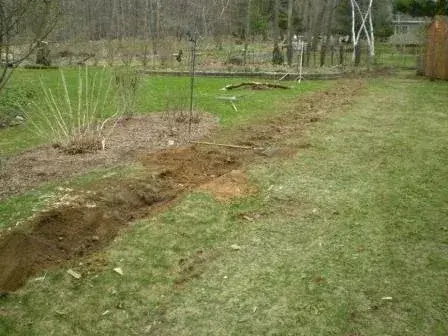

In 2008, a small infestation (76 trees) in Glenville, NY (Schenectady County) was found by an observant homeowner. He called his local Cornell Cooperative Extension horticulture educator who recognized it as oak wilt. Once the disease was confirmed by the experts at the USDA Forest Service, the NYS Department of Environmental Conservation –Forest Health Unit was able to quickly mobilize to survey and respond. All infected trees were removed and root zones were trenched (to sever root grafts). Monitoring has continued for three years and no additional oak wilt has been found. If no oak wilt is found in 2012 it will be deemed a successful eradication.
This case is a superb example of interagency cooperation between NYS DEC, NYS Agriculture and Markets, APHIS, Cornell University and Cooperative Extension, and local officials.
